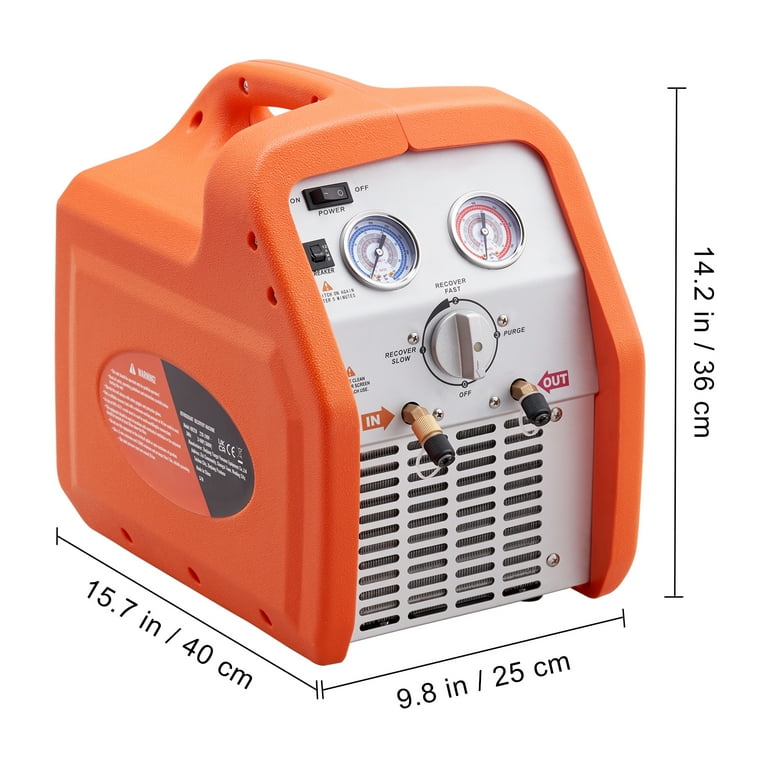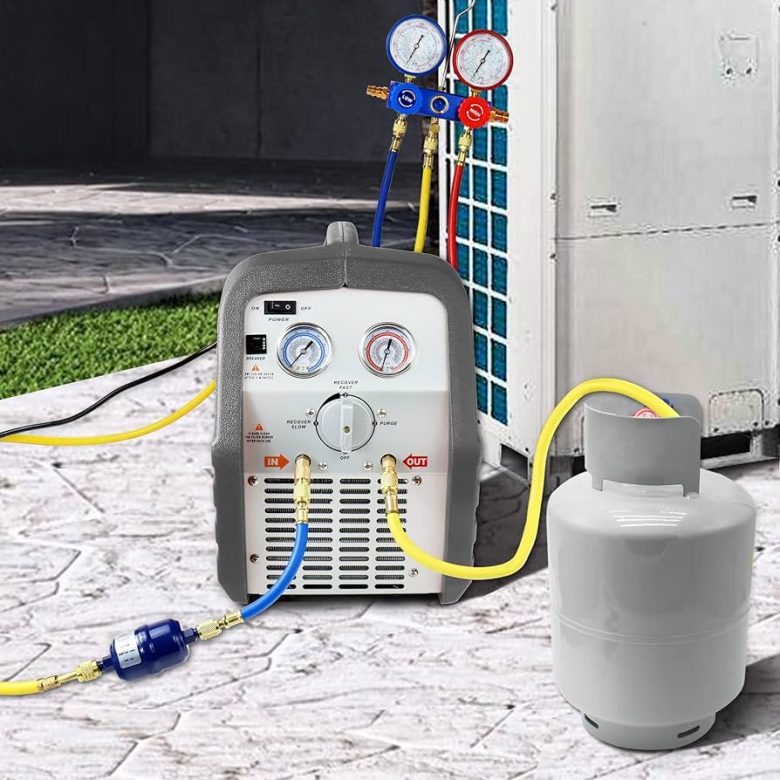MCQ: After refrigerant liquid has been recovered from the appliance, any remaining vapor is;
a. Purged to the atmosphere
b. Isolated in the appliance
c. Pumped into appliance receiver
d. Removed by the recovery system
The correct answer is the option d. After refrigerant liquid has been recovered from the appliance, any remaining vapor is removed by the recovery system
Explanation:
Recovering refrigerant from an appliance is a crucial task. It ensures the system runs efficiently and safely.
But what happens to the remaining vapor? After the liquid refrigerant is recovered, any leftover vapor must be removed by the recovery system and handled carefully. This step is vital to prevent environmental harm and maintain the appliance’s performance. Understanding this process can help you manage your appliances better.

Credit: www.walmart.com
Refrigerant Recovery System
Refrigerant recovery is a key process in managing appliances. After the liquid refrigerant is recovered, the remaining vapor needs attention. Using a refrigerant recovery system ensures safe and effective handling of these vapors. This guide explains the importance of recovery and the methods used.
Importance Of Recovery
Recovering refrigerant is essential for several reasons. Proper recovery protects the environment. It prevents harmful chemicals from being released into the atmosphere. This helps reduce ozone layer depletion and global warming.
There are also legal requirements. Many countries have regulations that mandate refrigerant recovery. Failure to comply can result in fines and penalties. Following these guidelines ensures you stay within the law.
Here are some key points on the importance of refrigerant recovery:
- Prevents environmental damage
- Complies with legal requirements
- Reduces health risks
- Promotes efficient appliance operation
Recovery also ensures the efficient operation of appliances. Removing vapor and liquid refrigerant helps maintain system performance. This prolongs the lifespan of the appliance and reduces maintenance costs.
Methods Of Recovery
There are different methods to recover refrigerant. Each method serves a specific purpose. Choosing the right method depends on the type of appliance and the amount of refrigerant.
Here are some common methods:
- Liquid Recovery: This involves removing the liquid refrigerant first. It is suitable for systems with large amounts of liquid refrigerant.
- Vapor Recovery: This method focuses on recovering refrigerant in its vapor state. It is often used after liquid recovery to ensure all refrigerant is captured.
- Push-Pull Recovery: This method is used for large systems. It involves creating a pressure differential to push liquid refrigerant out and pull vapor refrigerant into the recovery cylinder.
Understanding these methods helps in selecting the best approach. Each method has its own equipment and procedures. Proper training and equipment are necessary for effective recovery.
Using the right method ensures safe and efficient recovery. It protects the environment and complies with regulations. Investing in good equipment and training is crucial for success.

Credit: www.ecfr.gov











Leave a Review